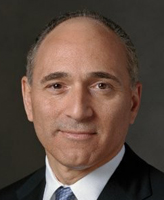Former Novartis CEO: Cell And Gene Therapies Will Drive Innovation

By Ed Miseta, Chief Editor, Clinical Leader

When Joe Jimenez was promoted to CEO of Novartis in 2010, many in the industry probably thought, Joe who? Jimenez himself chuckles when telling the story, which he did earlier this year at the 2019 Veeva R&D Summit. Jimenez had been at Novartis for less than three years and had a background in the consumer-packaged goods industry. He was working in London when AstraZeneca asked him to sit on the board of the company. In that capacity he learned about the pharmaceutical industry and decided he wanted to be part of it.
When he joined Novartis as division head of Consumer Health, Jimenez took his skillsets from the consumer-packaged goods industry and applied them to pharma. After heading Novartis Consumer Health for a few months, Jimenez was asked to run the pharmaceutical division. “That surprised me,” he says. “I was neither a physician nor a scientist. The board told me they had physicians and scientists. What they wanted was somebody who could look at how the world was changing and position the company to win in that emerging environment."

“I said this is nuts,” notes Jimenez. “We can generate double digit growth if we just start investing in the commercial sales and marketing in China and in parts of Southeast Asia. By doing that, by making those allocation changes, the business took off and then three years later the board made me the CEO.”
Partnerships Will Drive Innovation
When Jimenez joined Novartis, the company was launching a lot of products, but many were unsuccessful once they hit the marketplace. He felt the company was not thinking about the commercial potential of company products in the pipeline. To better oversee the income potential of treatments, Jimenez created a group called early commercial development, which he calls the commercial conscience of research.
“That was a little nerve wracking,” he now says. “I was the only individual on the Innovation Management Board with an equal vote who was not an MD or a PhD. This got our scientists to realize that it's not good enough to create a molecule. You have to think about when you're going to launch that molecule and what the competitive landscape is going to look like.”
When Jimenez made the move from Big Pharma to small biotech, he also learned about how quickly companies can move. At Novartis, he remembers being in meetings that would last hours simply trying to make a decision that should have taken five minutes. He is now an advisor for several small biotech companies where those long meetings do not take place.
“Bureaucracy doesn't necessarily have to be a bad word,” he admits. “Bureaucracy can certainly mean red tape, but if you have a huge pharmaceutical company without a clear decision making structure, what you are left with is chaos.”
One successful strategy that was used at Novartis was in creating a Venture Group, which Jimenez describes as a successful and independent effort. The company put money into a venture fund and told the fund to do its thing. It had access to the resources of Novartis but was not linked to the company.
“One thing that makes pharma different from a small biotech is deep resources and the scale and type of people available,” says Jimenez. “There is an R&D infrastructure and the ability to work on many different projects. In a small biotech we struggle to determine if we are going to focus on one or two projects. A portfolio review at Novartis would discuss 100 different programs. When you are making a small number of bets, you really need to think carefully about those bets. If you make the wrong bet, you will be out of business. A VC firm will help pharma find the good bets by looking for innovation outside their four walls even before those therapies reach the clinical stage."
Jimenez believes we will see more partnering models emerge between pharma and biotech companies, particularly with the explosion of innovation going on in the industry. He believes new treatments being developed in the cell and gene space will drive a lot of the innovation. Those treatments will be assisted by advanced analytics that allow the industry to target disease like never before. That combination will create a new ecosystem of innovation and partnering between Big Pharma and biotech companies.
CAR T Therapy Opens Doors
Shortly after he was promoted to CEO at Novartis, the company was the first to pursue a CAR T therapy. When Novartis invested in the therapy, it still appeared to be science fiction.
“We were discussing the concept of taking blood from a cancer patient, genetically engineering the T-cells in that blood to recognize and go after the tumor, and then reinfuse it back into the patient,” says Jimenez. “This was in 2012, and I remember my oncology people coming into my office with stunned looks on their faces. They had just become aware of Carl June's work at the University of Pennsylvania. His early work was with chronic lymphocytic leukemia, and his CAR T therapy was being used on patients who had no other hope.”
Novartis looked at June’s work and decided they had to be involved with it. At the time, no other large pharma companies opted to make an investment. Kite and Juno were two biotech’s that emerged in the space and were quickly purchased by Big Pharma.
“We were the original pioneers and decided we would do whatever it takes to get those treatments to the patients that needed them,” states Jimenez. “There were patients who had no other options. We knew this type of therapy had the potential to save thousands of lives. That may not have been our most successful endeavor, but I do think it is the one that has had the biggest impact.”
Now that gene editing is a reality, Jimenez believes regenerative medicine holds huge hope for patients. The U.S. population is aging, and Novartis has been investigating how treatments can increase life expectancy and prolong vision, hearing, and muscle as humans age. These are areas where there is significant degeneration.
“We can look at muscle as an example,” says Jimenez. “When humans age they lose a lot of muscle. That makes us frail, which leads to injuries, hip fractures, and eventual death. If we can build muscle among the elderly by finding a way to increase muscle mass, we could potentially extend life. There are currently several small biotech companies looking at muscle, as well as hearing and sight. I believe we may see significant increases in life expectancy in our lifetime.”
A Revolution Of Advanced Analytics
Looking towards the future, Jimenez believes advanced analytics and other emerging technologies will revolutionize all elements of the pharma industry, including research, drug development, and commercialization. New technologies can help the entire drug development process work faster, easier, and less expensively.
Jimenez is also a big believer in decentralized trials, which are taking trials to where the patients are instead of to the trial sites that have been used in the past. That model will speed clinical development but also enable patients who would otherwise not be able to participate in a trial. Now anyone can participate even if they don’t live near a clinic or medical center.
“All of this is happening because of technology, data, and data science,” he states. “I believe that in the next 10 years we are going to see radical changes in the way that research, development, and commercial are executed. Soon everything will be driven by data.”
Today around 40 percent of all investment is going into the area of immuno-oncology. Jimenez believes that’s good, since patients will now have new treatment options that they never thought possible. He notes there are around 3,500 immuno-oncology therapies currently being investigated. Still, he worries about what that might mean for more traditional diseases that still have a large unmet medical need. For example, he sees some companies almost completely abandoning respiratory disease, rheumatology, dermatology, GI, and cardiovascular disease. While the news is good for oncology patients, the swing in funding could leave other patients in need.
“The patients with respiratory disease deserve new medicines as well,” says Jimenez. “We have to make sure we prevent what happened in anti-infectives, where there is currently very little activity. We are on the verge of turning several cancers into chronic diseases. That is very exciting news, but we will need companies to pick up the slack in these other disease areas.
Finally, for everyone involved in drug development, Jimenez recommends that you disrupt. Look at what you're working on today and find new ways to radically change the status quo. “Data, data science, and advanced analytics are going to be key,” he states. “The early adopters of technologies that improve efficiency are going to be the ones who win. We are living in an amazing time for healthcare. Our focus is on patients and human health. I just don't think there's a greater mission and purpose.”
